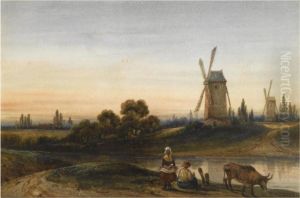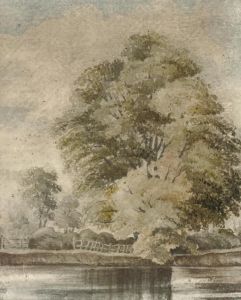John Cart Burgess Paintings
John Cart Burgess, born in 1814, was a British artist whose career spanned the heart of the 19th century, a period rife with change and innovation in the art world. Despite not being as widely recognized as some of his contemporaries, Burgess's work offers a fascinating insight into the aesthetic and thematic preferences of his time. His life and career were emblematic of the struggles and successes faced by artists in a rapidly evolving cultural landscape.
Burgess specialized in watercolors, a medium that gained significant popularity in England during the 18th and 19th centuries. Watercolor painting was appreciated for its ability to capture landscapes and scenes with a degree of immediacy and luminosity not always achievable with oils. Burgess, like many of his peers, was drawn to this medium for its versatility and the unique challenges it presented. He was known for his meticulous attention to detail and his ability to convey atmospheric effects with delicate brushwork.
Throughout his career, Burgess exhibited a keen interest in landscapes and historical scenes, subjects that were very much in vogue at the time. He participated in exhibitions at prestigious institutions such as the Royal Academy and the British Institution, which were central to the art world of 19th-century Britain. These exhibitions were not only crucial for the careers of artists but also for the public's exposure to art, serving as the primary venue for artists to gain recognition and sell their work.
Burgess's contributions to the art world, though perhaps not as celebrated as those of some of his contemporaries, reflect the vibrancy and dynamism of British art in the 19th century. His dedication to watercolor painting and his ability to capture the essence of his subjects helped to cement his place in the annals of British art history. John Cart Burgess passed away in 1874, leaving behind a body of work that continues to be appreciated by art historians and collectors for its beauty and historical value.


